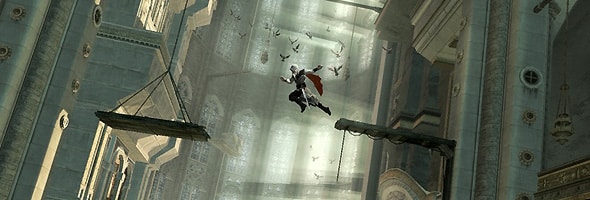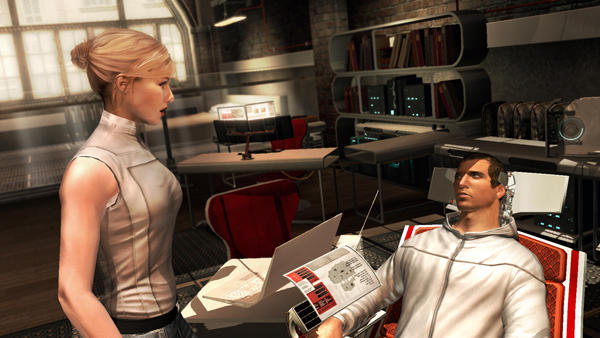Wherein the unstoppably awkward force meeds the unnecessarily loud establishment: The highlight reel of my night clubbing
Disclaimer: in the following I intend to poke fun at both an actual club and people who - for once - aren’t myself. I’ve taken the liberty of replacing friend’s names with Charles Dickens’ beloved characters to spare their feelings. Hope you understand.
 I am, to understate, dramatically antisocial. My idea of a ‘good time’ usually involves watching old reruns of Scrubs while dual-wielding cups of tea. As a rule, the best reason I’ve found for leaving the house is to embark on a quick quest for Doritos.
I am, to understate, dramatically antisocial. My idea of a ‘good time’ usually involves watching old reruns of Scrubs while dual-wielding cups of tea. As a rule, the best reason I’ve found for leaving the house is to embark on a quick quest for Doritos.
Maybe if I’m feeling dangerous some salsa as well.
Despite this, I somehow found myself queueing with six or seven friends outside a well-known Glasgow club one saturday night; trapped at the front of the line, unable to make any kind of a getaway.
Here are the highlights of my night on the town.
I stood at the front of the queue, nervously thumbing my glasses back to the top of my face, then turned to my buddy Barnaby Rudge and grinned awkwardly. Barnaby, unfortunately, was already preoccupied.
“Oh-man-look-there”, he muttered, unconsciously toying with the cuffs of his shirt and staring at a nearby group of women whose smiles were rigidly screaming I’ll die before I admit I am cold.
I thumbed my glasses again, left him to his mental debauchery. After a few seconds we were led out the line and to the doorway of the club, preparing to offer our IDs to a bouncer large enough to use one of our arms as a Q-tip. More than that, he looked like he’d take a fair amount of pleasure in removing the limb of a fellow human being: his eyebrows caterpillared like angry stitches across his face just below a huge bowling-ball slab of a forehead, his mouth puckered as if he was being drip-fed a lemon. The raging giant was dressed in all black - probably, I assumed, so he could attend my funeral (“I didn’t mean to swat him to death with his driver’s license, honest!”) without too much effort.
I watched John Jasper, my friend in front, approach this Moby Dick of bouncers. He grunted, surveyed Jasper’s passport, then, seemingly satisfied, began to paw down his victim’s frame for any concealed weaponry.
Endowed with kitten-like rage, Jasper couldn’t help but let an awkward giggle escape when his inner seem was patted down for a switchblade or two. Misinterpreting the laugh, Moby Dick leapt up and Jasper found himself face-to-shoulderblade with the Hulk’s bigger brother.
“Sorry, is something funny?” Moby growled, intimating that he very much hoped there was. My bold friend squeaked the opposite, however, and was after a few seconds of terrifying eye contact, permitted to pass through intact.
At my turn, I thought it best not to ask Moby to pull my finger.
 |
| A whale of a time |
Eventually, all of our group entered the jaws of the club. Unscathed and reunited, we descended down some dark dark stairs, along some dark dark halls, past a dark dark cloakroom. After letting a marker-pen-wielding employee stamp the backs of our hands - or, in my confused case, a palm - we found ourselves in the fabled ‘Dance Floor’: a place seemingly designed to maximise impracticality. Just filled enough that it could be navigated, but not without some apologetic shoves; the music was too loud to talk, too quiet to sit silent. The constant pulse of the bass made me think of a monolithic heart beating a few inches under our feet.
Dignity recovered, Jasper let out a grin pointed to an empty corner saved for us, and I was suddenly sitting under a poster-sized image (on reflection, probably a poster) of a thoroughly topless blonde. I was unreservedly uncomfortable. Scrooge asked what I wanted to drink, and I thought it best not to enquire if breakfast tea was a viable option.
For the next hour after this, I did my best to look as though I was enjoying myself. I was clearly failing.
“C’mon!” Scrooge accosted me. “Get up and dance! Have some fun! Aren’t Christians always saying they can have fun too?”
I began explaining that while Christians could enjoy a dance or two and certainly could be fun loving, it was, mercifully in my case, no mandate; that I danced like an Albatross on LSD and that I was too busy enjoying my second vodka and coke - which was a blustering lie, it was my third coke and coke - to even consider moving.
 Evidently, Scrooge couldn’t hear me. I was yanked to my feet, thrust into the crowd and forced to spend some time flicking between waiting for the earth to swallow me up and moving with what I hoped was the beat of the floor-heart.
Evidently, Scrooge couldn’t hear me. I was yanked to my feet, thrust into the crowd and forced to spend some time flicking between waiting for the earth to swallow me up and moving with what I hoped was the beat of the floor-heart.
It was here I spied companions Oliver Twist and Mr. Bumble confidently arm-pump their way towards another group of women, who, in turn, arm pumped away. Before they were swept up in the crowd, I saw my gallant friends artfully ignore the hint and continue their mission.
After a stretch of standing/minimalist dancing, I shoved my way back to the corner. Under the legs of our new poster-friend I saw the friends who were still sitting down laughing and pointing back to the floor. I wheeled, and was greeted with the reality of Barnaby and some girl locked at the jaw, seemingly doing their darndest to swap faces. I turned back to the corner, sat down.
Expecting to be met with a shouted quip or two, I saw one of my buddies looking pale, then paler, then about the same shade as Marley’s ghost. After a few concerned ‘you alright, man?’ queries, this particular friend’s evening’s alcohol consumption was spewed all over the table.
Shortly after we were very nicely asked by a bouncer to get the *insert expletive here* out and so we emerged into the slightly smoggy air of the early morning looking for a taxi. No transport was immediately available, and we decided to huddle in a nearby KFC and joke about the evening’s escapades.
Meanwhile, Barnaby sat reminiscing about one specific incident.
“She was perfect, man!” he cried, plucking an empty bargain bucket from a nearby table and sticking it on his head. “Oh!” His eyes sparking up, “I never got her number! We need to go back! I think she was the one, man...”
The evening then ended as it had begun - with my deciding to choose my battles wisely. It was, I thought, not the best idea to debate the nature of love with a man who was currently demanding people call him the Colonel.
The taxi arrived, we were driven home.
Needless to say, I was back to the tea and sitcoms the following night. And every night to eternity, until hot beverages are served along with the Budweisers.

















